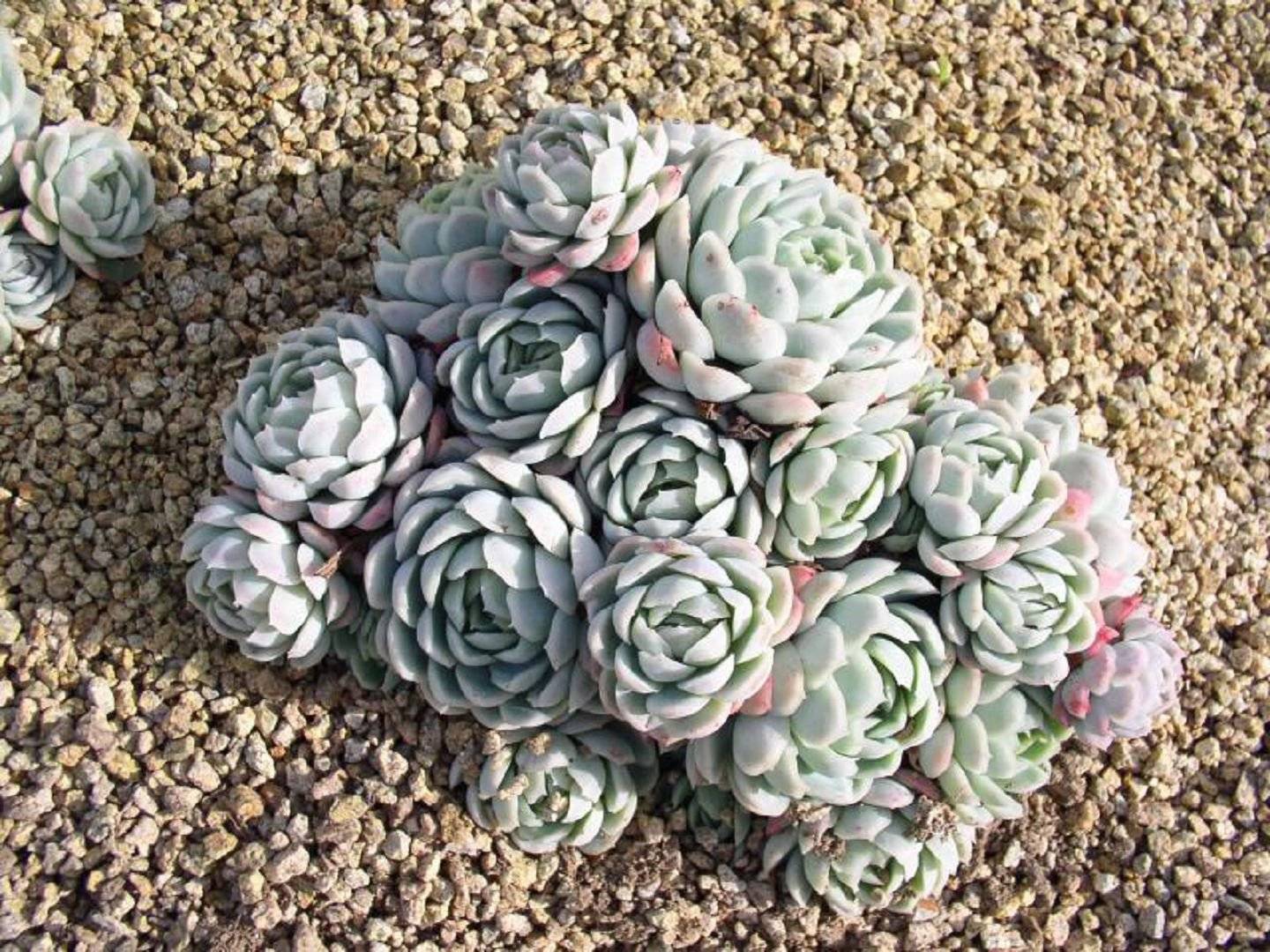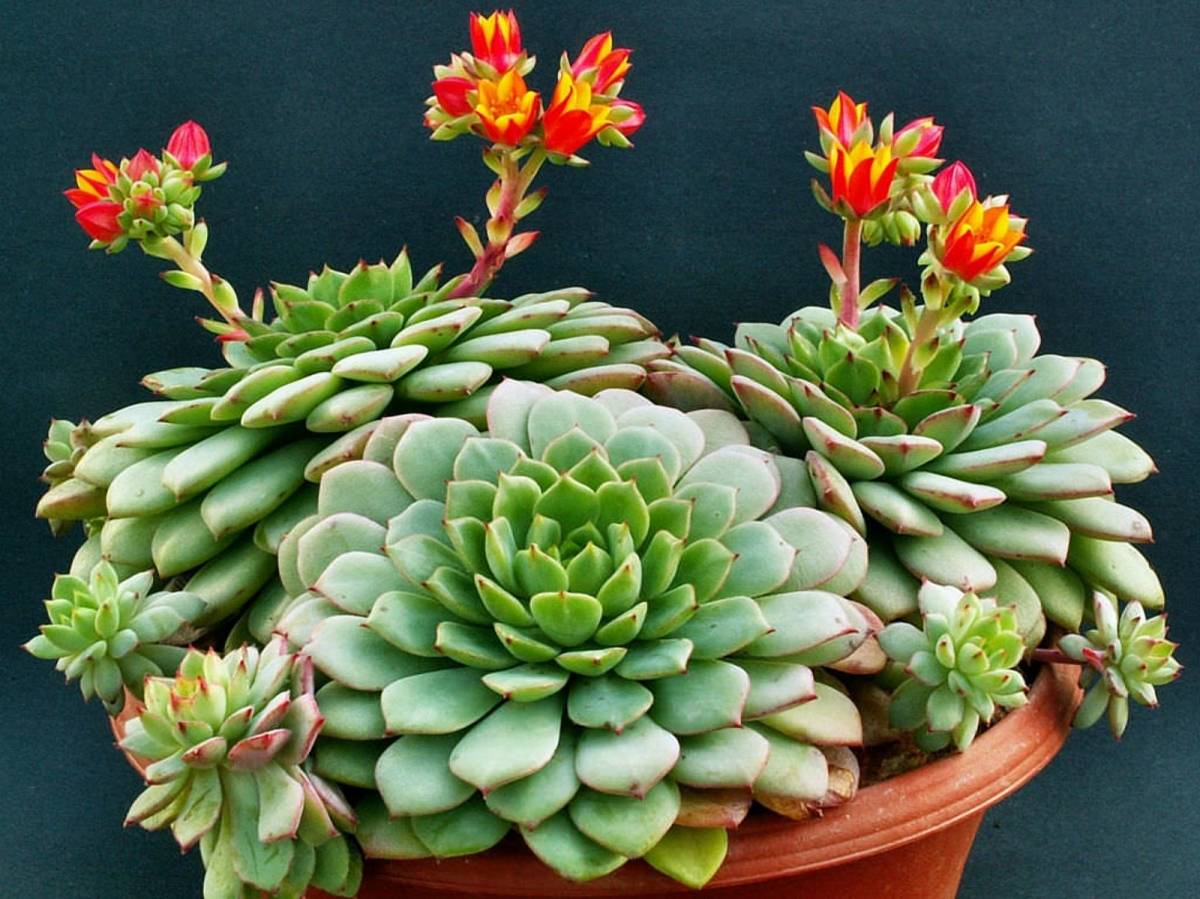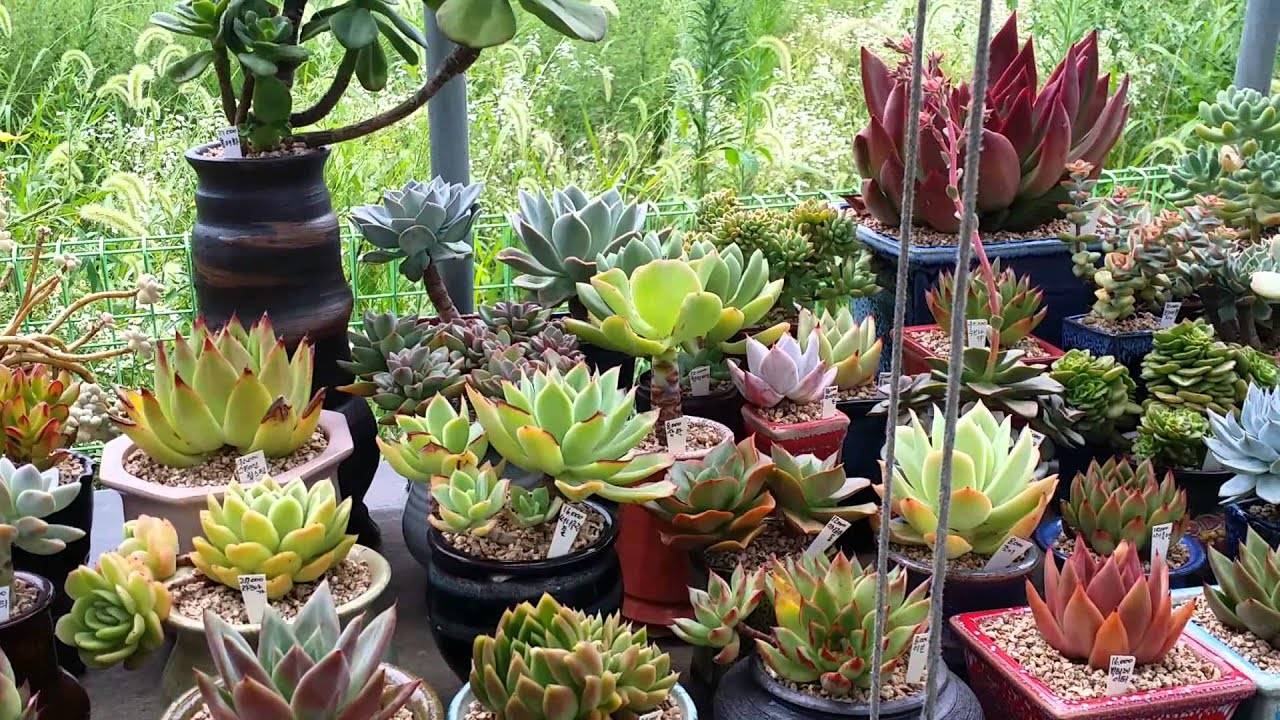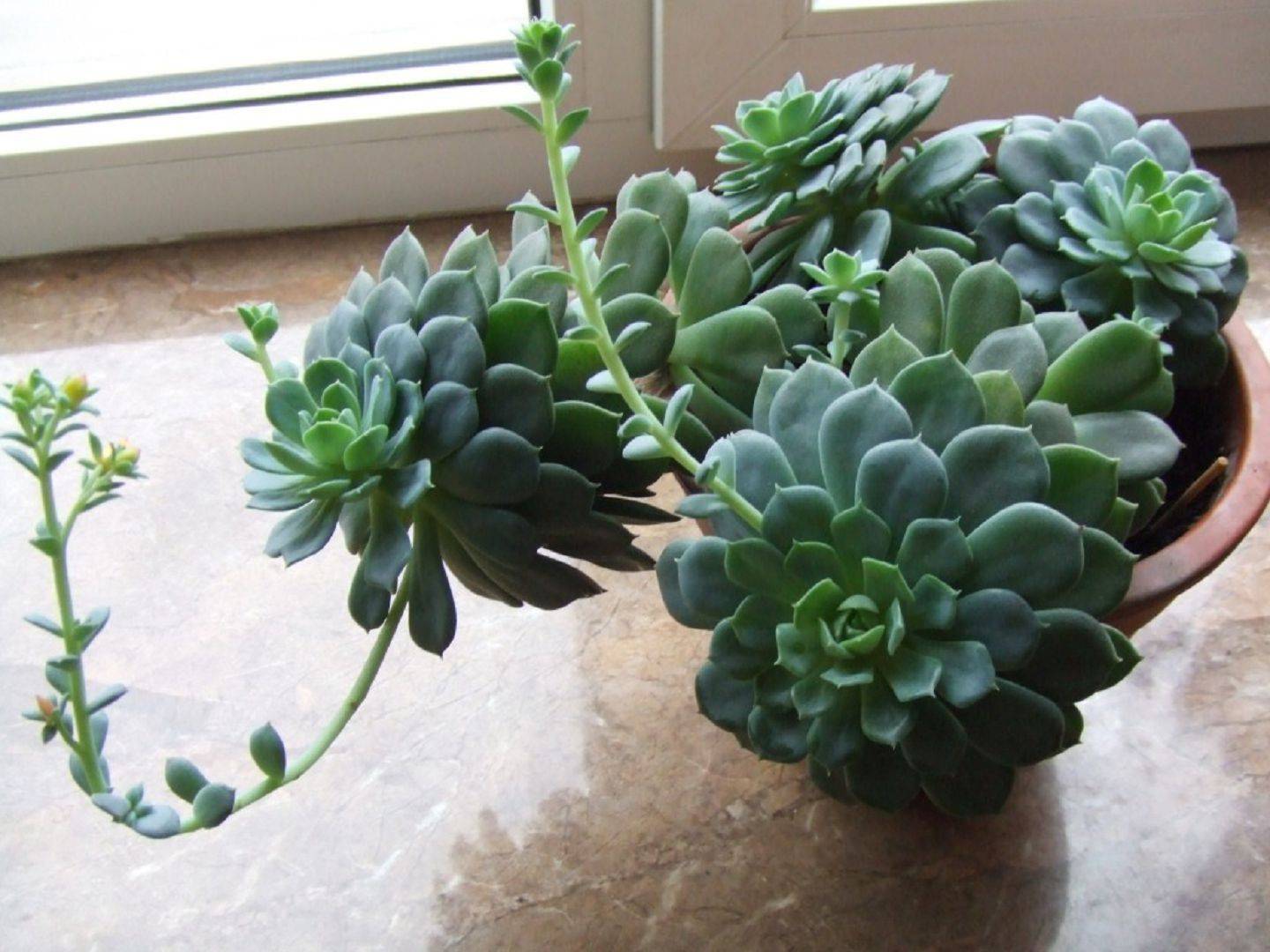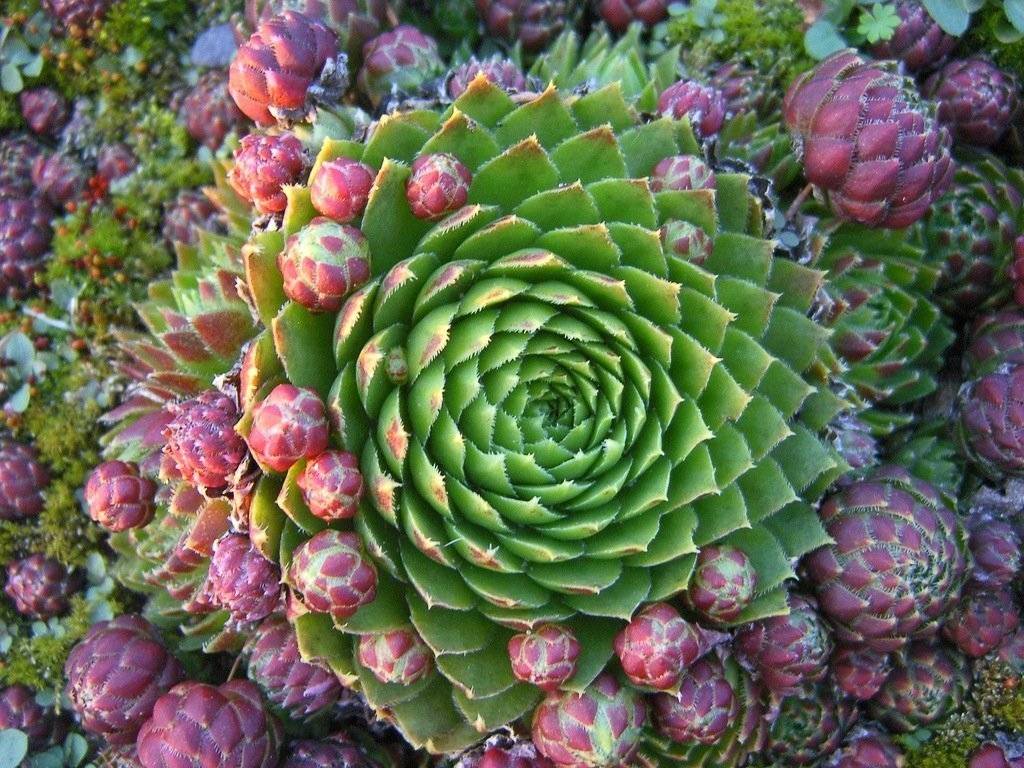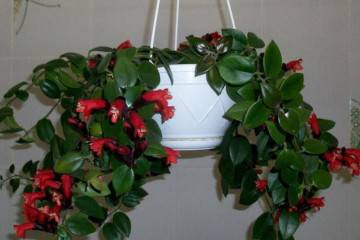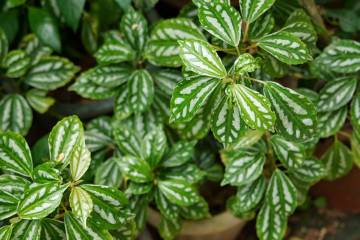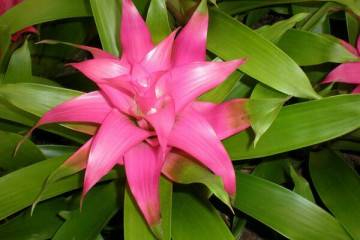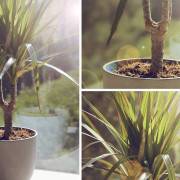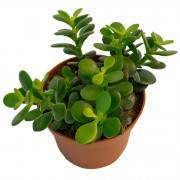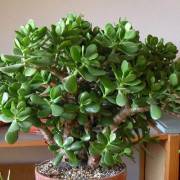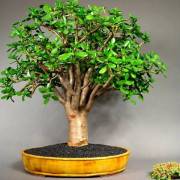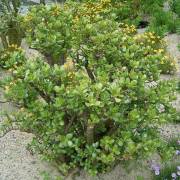Echeveria - home care and reproduction
Content:
Even the most experienced gardeners cannot immediately name at least five varieties of succulent plants. In almost every home you can find aloe, cactus or money tree. Many plants have signs of succulents, but amateurs cannot distinguish the characteristic features. One of the brightest representatives of this family is the beautiful Echeveria flower.
Echeveria - home care
The plant grows from spring to late autumn, at which time it actively grows and develops. This does not require any special care difficulties. Echeveria petals have a waxy, fluffy bloom of a bluish tint, it is under this bloom that moisture and all nutrients accumulate. The shell is extremely thin, even touching it with a hand destroys it, and the plant then suffers and recovers for a long time. To prevent this, professionals cover the flower with a glass dome or film.
Among the most popular varieties of this plant are the following:
- Echeveria Graceful,
- echeveria Mix,
- Echeveria Miranda,
- echeveria Shaviana,
- echeveria lau,
- echeveria Pearl of Nuremberg,
- echeveria Desmet,
- echeveria stone rose,
- Echeveria Bristly,
- echeveria humpback-flowered,
- Echeveria Agavoides,
- echeveria Agave.
Temperature
The optimum temperature for Echeveria coincides with the climate of the middle zone. The range of 22-27 degrees Celsius is favorable. In winter, this miracle succulent loves coolness, the temperature should vary from 6 to 8 degrees Celsius. Thanks to this coolness, the rosettes of the flower will not stretch out and will not become loose.
If the grower does not really care about the appearance of the outlets, you can keep the plant at a temperature of 18-20 degrees Celsius. Under these optimal conditions, the plant will begin to bloom. The inflorescences are usually pink in color.
Lighting
Succulents love a lot of light and direct sunlight, the echeveria succulent is no exception. When growing a plant, you should choose windows on the south side of the house. In the summer, the flower is taken out into the garden or on the balcony, not forgetting to protect it from rain.
In the shade, this indoor flower stops growing altogether, not to mention its flowering. A young plant needs to be gradually adapted to the bright sun. For a start, containers with landings are placed under diffused light. In the summer, they can already be taken out on the veranda or balcony.
Watering
Watering should be moderate; in nature, Echeveria is used to droughts. Between wetting, the soil in the container should dry out at least a third of the depth. With a lack of water, the leaves will be lethargic or will begin to wrinkle.
Watering is carried out carefully under the plant so as not to pour water on the leaves, otherwise the gray-colored wax bloom will be damaged. Usually they use watering in a pan, the residues must be poured out. In no case should you fill the flower, otherwise the root system will begin to rot.
Spraying
In no case should you spray and wipe the leaves of echeveria, otherwise the wax coating will be disturbed and the plant will begin to suffer.
Humidity
This succulent plant perfectly tolerates especially dry air, which usually reigns in apartments in winter, when the batteries are turned on.
Priming
The flower prefers to grow in loose soils with low nutritional value. You can purchase a ready-made soil composition for succulents, to which river sand and crushed brick chips are added. As a prophylaxis for root rot, crushed charcoal can be added to the soil.
You need to plant a flower in pots of medium height. A drainage layer is covered at the bottom. Small expanded clay or shredded shingles are suitable. If the florist wants to prepare the soil on his own, then he will need:
- sod land - 1 part;
- leaf land - 2 parts;
- dry clay - 1 part;
- coarse sand - 1 part;
- drainage layer.
Do not forget about soil disinfection. The earth needs to be steamed with a water bath or simply calcined in an oven.
Pot
The pot must be chosen low, since the succulent has a superficial root system. The diameter of the pot is selected according to the diameter of the root rosette. Experienced gardeners usually use ceramic containers, thanks to which air and moisture penetrate well into the soil. The plastic is quickly heated by the sun, which will negatively affect the roots of the plant.
Before planting, any container is treated with boiling water or a solution of foundation, which has a disinfecting effect. The drainage holes are periodically cleaned with cotton swabs, so the holes are not allowed to clog and water does not accumulate in the pot.
Top dressing
An excessive amount of fertilizer is undesirable, since the decorativeness of the plant in this case begins to suffer. In the spring, during the active growing season, you can apply liquid fertilizers for succulents with watering. In winter, feeding is not needed at all.
Pruning
The plant does not require any special pruning. After drying, you need to remove the peduncle. Sanitary pruning involves removing dry stems after flowering. It is also necessary to remove damaged root processes and wilted leaves in case of transplantation.
If the care was incorrect, echeveria can be stretched, its growth is disturbed. These very elongated tops need to be cut off. The cut site is processed with crushed coal. Subsequently, new shoots appear in internodes. So the bush will acquire a beautiful compact shape.
How echeveria reproduces
If Echeveria is easy to care for, then the situation with reproduction is somewhat different.
This process is complicated, but try different ways to get the final result. You can propagate a flower by sowing seeds or rooting cuttings.
Germinating seeds
It is extremely difficult to propagate Echeveria by seeds, and this method is not chosen so often. Before collecting the seeds, you need to wait for the plant to bloom, and it is extremely difficult to get this succulent to give inflorescences.
Pollination is carried out manually. After that, you need to wait for the plant to bloom and give seeds. When the material is received, it must be sown in a slightly acidic substrate. After such a painstaking and lengthy preparation, it is already quite easy to plant Echeveria with seeds.
Containers with plantings should be placed in a warm place where the air temperature varies from 25 to 30 degrees Celsius. Air humidity should also be high. The complexity of the process does not always justify itself, and often it is simply not possible to grow sprouts.
Rooting cuttings
The flower has a period when the lower leaves dry up and fall off by themselves, and the upper ones begin to bloom.As a result, the top very soon tilts to one side from the weight of young and massive leaves. At this moment, the appearance of Echeveria becomes not entirely attractive, and therefore she needs a haircut. The tip is simply cut off, after which it needs to create such conditions under which it can take root.
Reproduction by rosettes
This plant is also not easy to propagate with leaves. For the leaf to take root, you need to create the necessary conditions. Reproduction by seeds and rosettes is equally difficult.
The hardest part is maintaining the right temperature and high humidity. Such an atmosphere should be maintained in a small but voluminous space.
Transfer after purchase
After purchase, Echeveria must be transplanted. This is done approximately 2 weeks after purchase. Until the moment of transplanting, watering completely stops. Transfer to another container is carried out with a dry ball, and at the end of the process, the flower can already be watered. Echeveria should not be transplanted into open ground.
Further, the transplant is meant annually at a young age. An adult plant is transplanted no more than once every 4 years. The container is selected shallow and wide enough. The rhizome is on the surface, so a deep pot will not work.
Possible problems in the cultivation of Echeveria
This plant, despite all the ease of care, is quite capricious. Among the main problems, it is worth noting:
- the appearance of gray spots on the leaves;
- increased leaf fragility;
- the sheet began to curl up;
- the socket has become loose;
- the leaves were crushed and became rare.
Echeveria's leaves fell off
When the leaves of the flower become extremely fragile, easily fall off the stem, we can say that the plant was watered too intensively and kept at low temperatures.
Perhaps the depth of the container does not correspond to the norm and it is too large, the soil in this case simply does not have time to dry out normally before the next watering. This is not to say that this is a disease, but such a situation will certainly lead to a deterioration in the condition of the plant.
Echeveria grows up
Why a flower becomes long and unattractive, not everyone knows. This situation usually occurs during the winter. The stretching of the plant occurs due to the lack of sun. Echeveria during this period often becomes like a Christmas tree. The situation can be corrected by transferring the pot to a well-lit windowsill. If that doesn't work, it is important to provide the flower with constant artificial light.
How to care for an echeveria flower, not every beginner knows. However, thanks to the basic simple rules, you can grow a beautiful and healthy plant.
